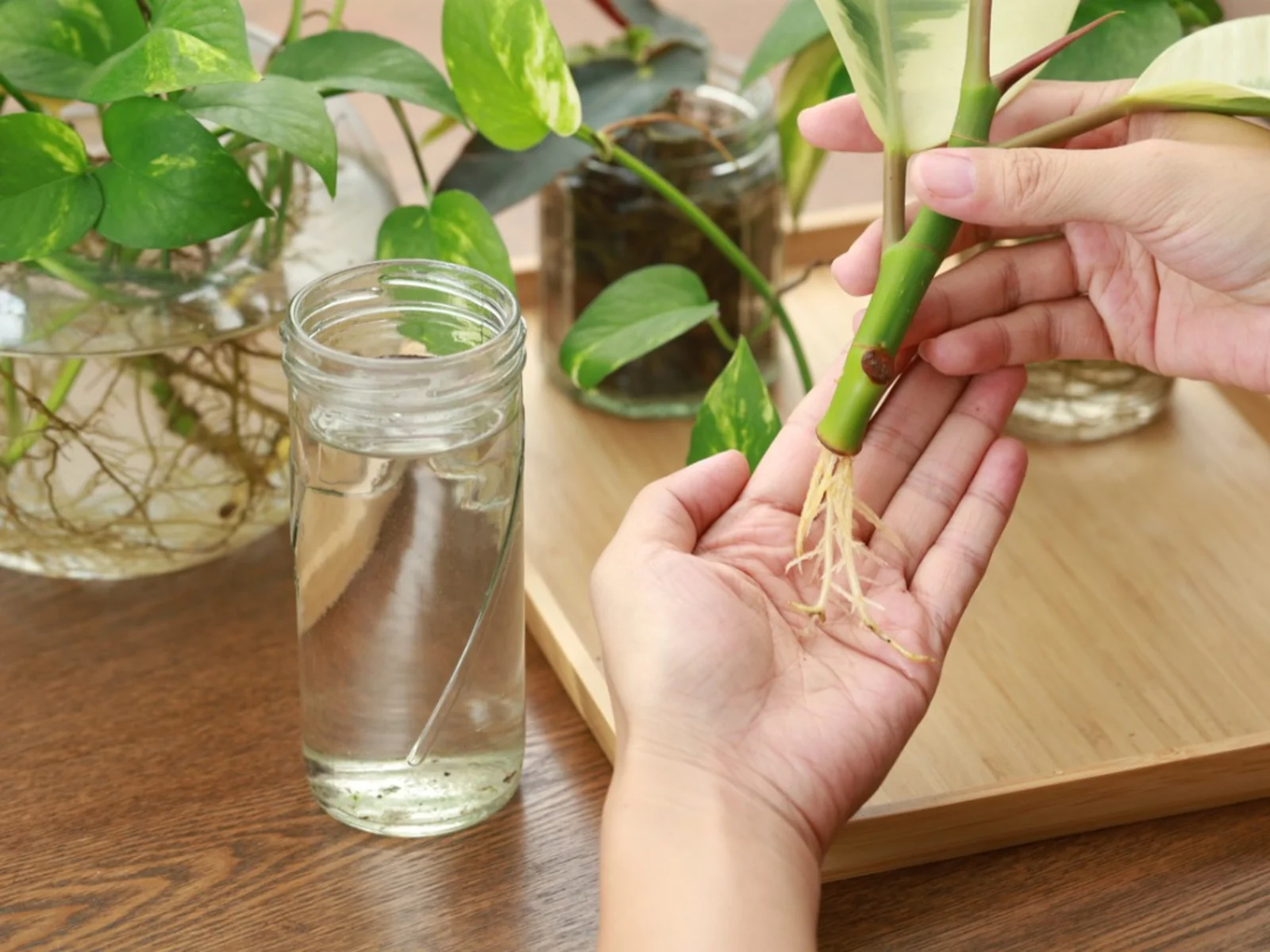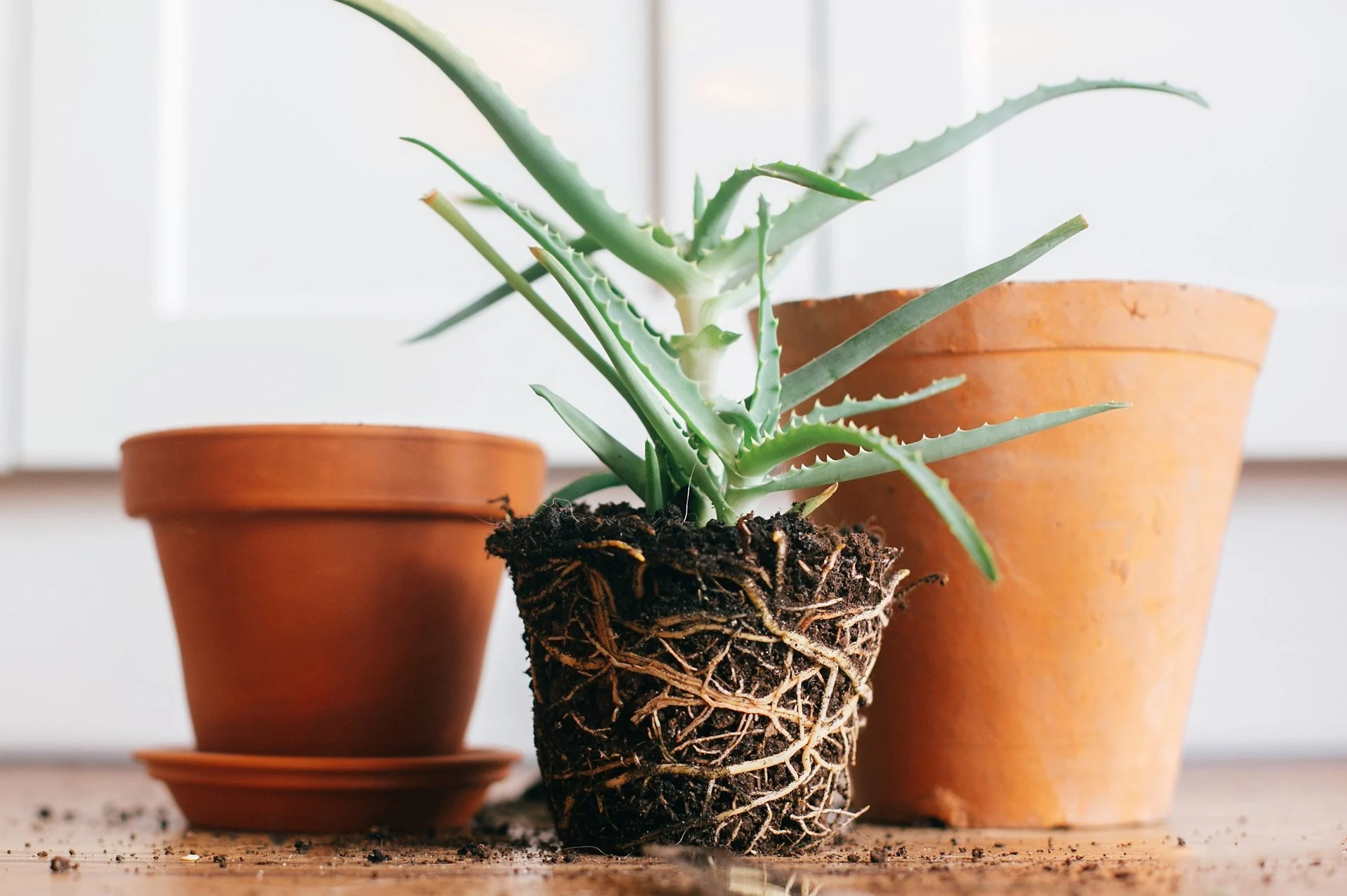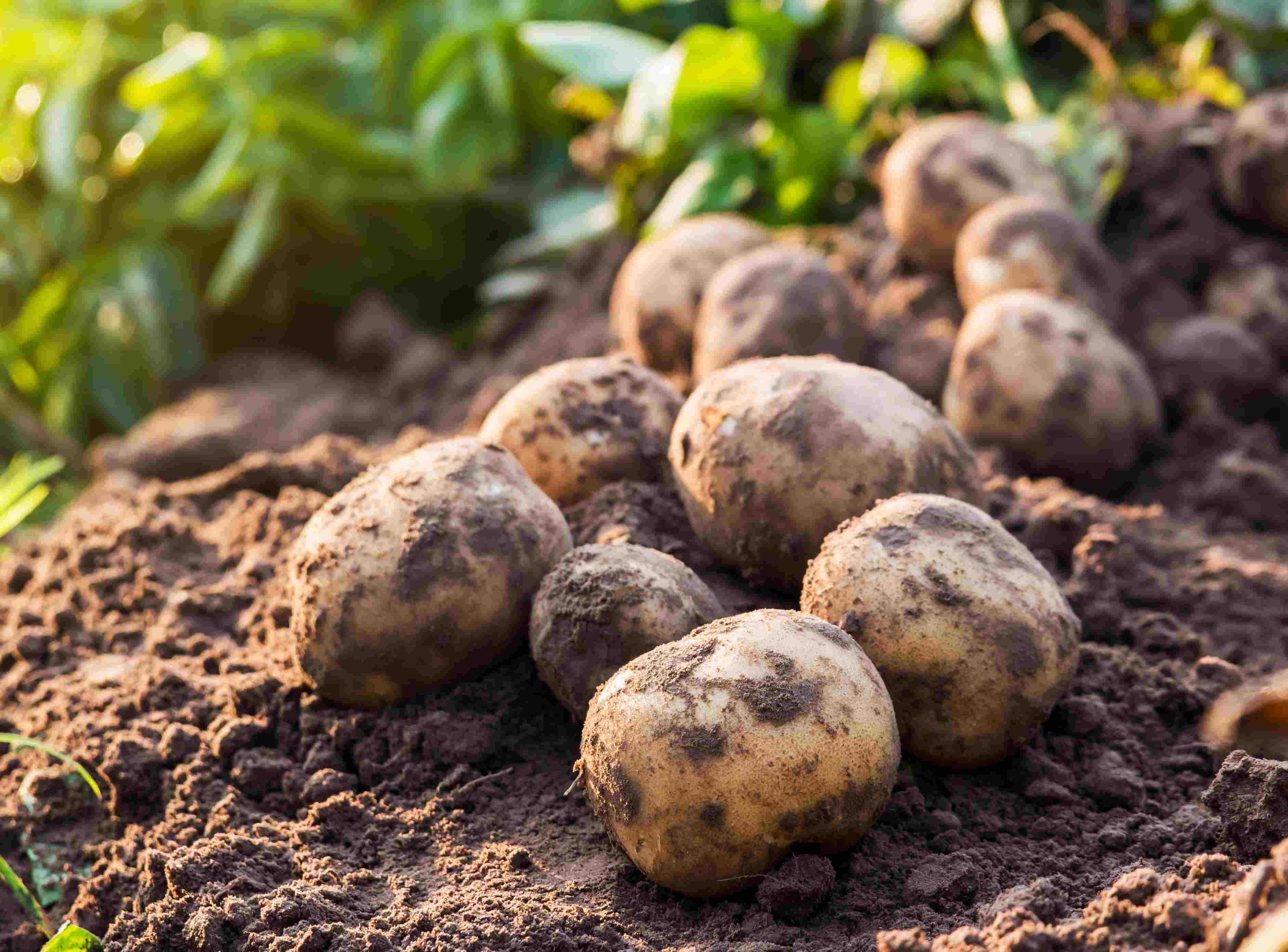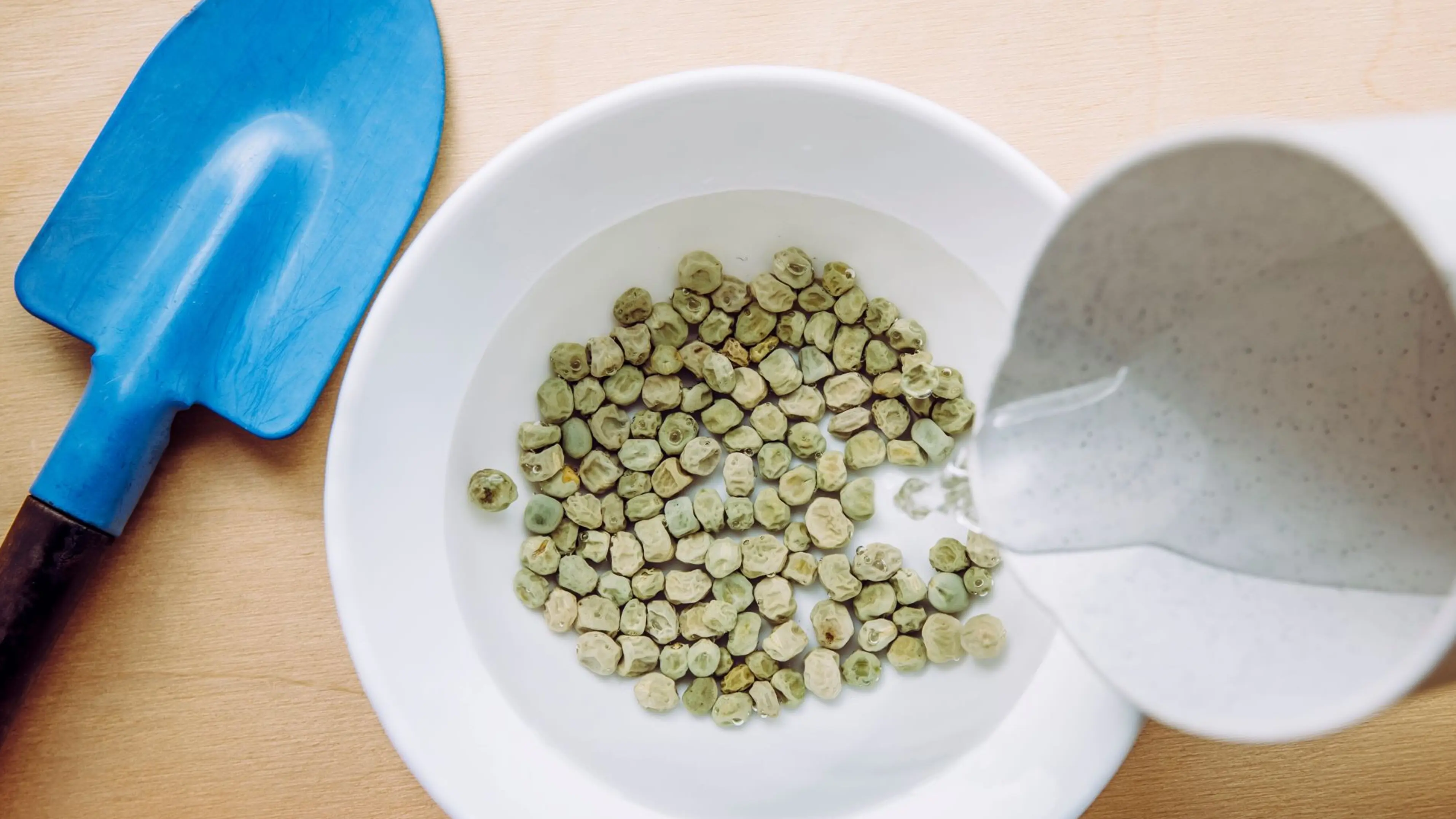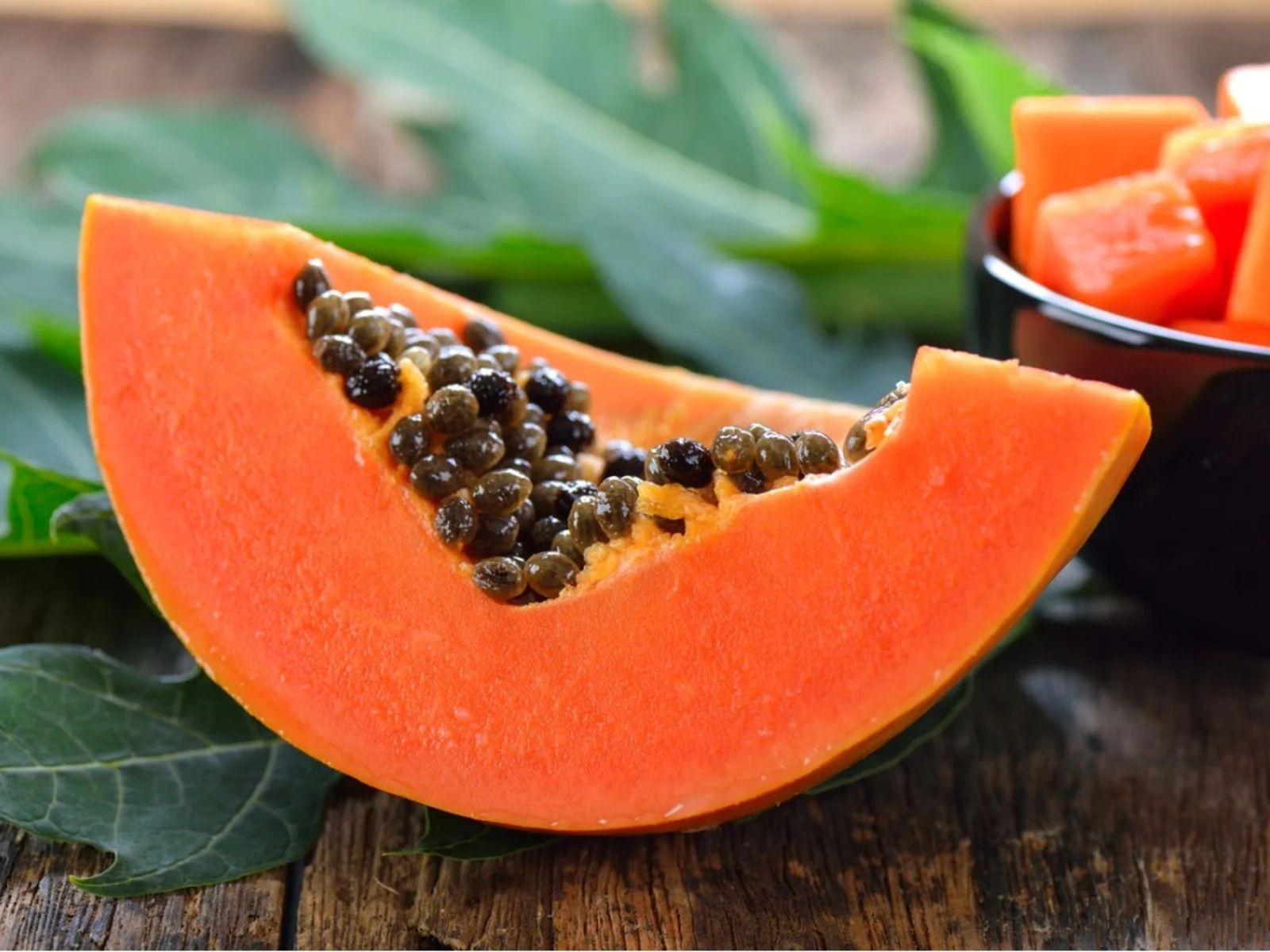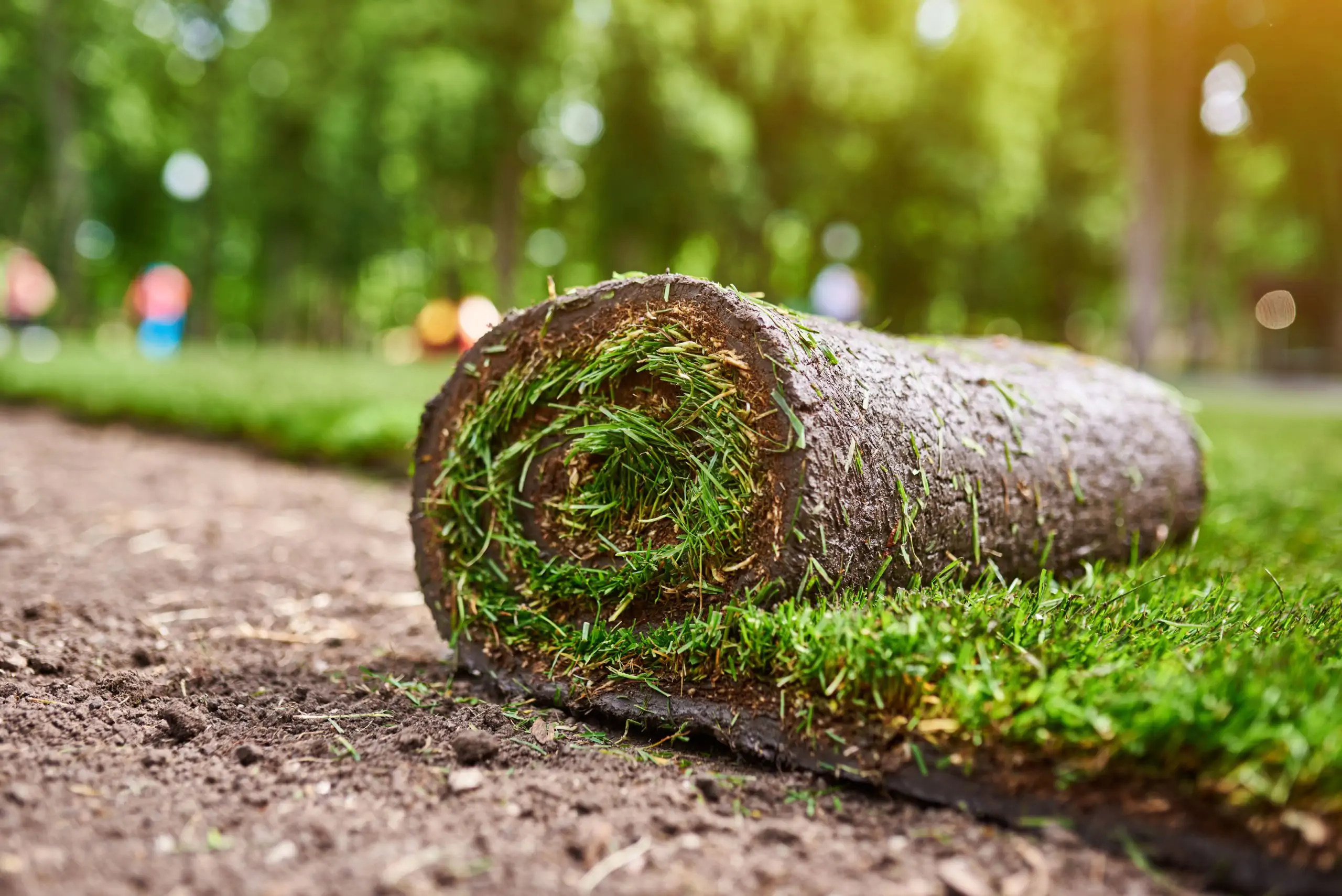Home>Gardening Basics>Understanding Soil>How To Fertilize Soil Before Planting


Understanding Soil
How To Fertilize Soil Before Planting
Published: February 8, 2024
Learn the importance of understanding soil for successful fertilization. Discover the best techniques to prepare your soil before planting for optimal growth and productivity.
(Many of the links in this article redirect to a specific reviewed product. Your purchase of these products through affiliate links helps to generate commission for Chicagolandgardening.com, at no extra cost. Learn more)
Table of Contents
- Introduction
- Benefits of Fertilizing Soil Before Planting
- Step 1: Test Soil pH Level
- Step 2: Determine Nutrient Needs
- Step 3: Choose the Right Fertilizer Type
- Step 4: Calculate the Fertilizer Quantity
- Step 5: Prepare the Soil for Fertilization
- Step 6: Apply the Fertilizer
- Step 7: Incorporate the Fertilizer into the Soil
- Step 8: Water the Soil
- Step 9: Monitor and Maintain Soil Fertility
- Conclusion
Introduction
Welcome to the ultimate guide on how to fertilize soil before planting! Whether you are a seasoned gardener or just starting out, understanding the importance of soil fertility is crucial for successful plant growth. Fertilizing the soil provides essential nutrients that plants need to thrive and produce abundant yields. It is a key step in preparing your garden or fields for planting.
Soil fertility refers to the soil’s ability to provide essential nutrients, water, and oxygen to plants. Over time, the natural fertility of soil can become depleted as plants absorb nutrients and other environmental factors leach them out. Fertilizing the soil effectively replenishes these nutrients, ensuring a healthy growing environment for your plants.
By following proper fertilization practices, you can significantly improve the quality of your soil and enhance plant growth. This guide will walk you through the steps required to fertilize your soil before planting, helping you achieve the best possible results.
Before we dive into the specifics of fertilizing soil, it’s worth highlighting some of the key benefits associated with this practice. By understanding the advantages, you’ll gain a better appreciation for the importance of soil fertility and the role fertilizer plays in promoting plant health and productivity.
Benefits of Fertilizing Soil Before Planting
Fertilizing soil before planting offers several significant benefits that contribute to the overall success of your garden or crop yield. Let’s explore some of these key advantages below:
1. Enhanced Nutrient Availability: Fertilizers provide essential nutrients that may be lacking in the soil, such as nitrogen, phosphorus, and potassium. These nutrients are vital for plant growth, root development, flowering, and fruit production. By supplementing the soil with the necessary nutrients, you ensure that your plants have access to everything they need for healthy growth and optimal yield.
2. Improved Soil Structure: Fertilizers not only supply nutrients but also help improve the soil’s physical properties. Organic fertilizers, such as compost or manure, can enhance soil structure by increasing the presence of organic matter, improving drainage, and promoting aeration. This, in turn, creates a more favorable environment for root growth and allows plants to extract nutrients more efficiently.
3. Balanced pH Levels: Soil pH is a measure of acidity or alkalinity and plays a crucial role in plant nutrition. Different plant species thrive in specific pH ranges. Fertilizers can help balance soil pH levels, ensuring that it falls within the optimal range for the plants you intend to grow. This promotes better nutrient uptake and overall plant health.
4. Increased Disease Resistance: Healthy, well-nourished plants are better equipped to defend against diseases and pests. When soil is adequately fertilized, plants have the resources they need to develop strong immune systems and resist common ailments. This reduces the risk of crop failure and the need for excessive pesticide use.
5. Higher Yields and Quality: Fertilizing soil before planting is directly linked to increased crop yield and improved harvest quality. The availability of essential nutrients promotes vigorous plant growth, enhances flowering and fruiting, and leads to bigger, tastier, and more abundant produce.
6. Sustainability and Environmental Protection: By providing plants with the nutrients they require through fertilization, you can minimize the need for synthetic chemical inputs. Organic fertilizers, in particular, are derived from natural sources and have lower environmental impacts compared to traditional synthetic fertilizers. This promotes sustainable farming practices and helps protect soil health for future generations.
Overall, the benefits of fertilizing soil before planting are numerous and significant. From improving nutrient availability to enhancing soil structure and promoting disease resistance, proper fertilization sets the foundation for a successful and thriving garden or crop production.
Step 1: Test Soil pH Level
Before applying any fertilizer to your soil, it is essential to determine the pH level. Soil pH directly affects nutrient availability to plants and plays a crucial role in their overall health and productivity. Testing the soil pH will help you identify whether your soil is acidic, neutral, or alkaline.
To test the soil pH, you can purchase a soil pH testing kit from a local garden center or use a soil testing service. Here’s how you can carry out the soil pH testing:
- Collect soil samples: Select about 5 to 10 different areas in your garden or field, avoiding areas where fertilizers or amendments have recently been applied. Use a trowel or shovel to collect soil samples at a depth of 6 to 8 inches.
- Prepare the soil samples: Remove any debris such as rocks or plant roots from the soil samples. Combine the soil from the different areas in a clean container and mix it thoroughly.
- Perform the test: Follow the instructions provided with the soil pH testing kit to perform the test. Typically, you will need to take a small amount of soil from the sample and mix it with the testing solution. The color change in the solution will indicate the pH level of the soil.
- Interpret the results: Compare the color of the testing solution with the reference chart provided in the testing kit. This will indicate the pH level of your soil. Most plants prefer a slightly acidic to neutral pH range of 6.0 to 7.0.
- Make necessary adjustments: If your soil pH is outside the recommended range for your desired plants, you may need to make adjustments. Acidic soils can be raised by adding lime, while alkaline soils can be lowered by adding elemental sulfur or organic matter.
By testing your soil’s pH level, you can ensure that you choose the right fertilizer and make any necessary adjustments to create an optimal growing environment for your plants.
Step 2: Determine Nutrient Needs
Once you have determined the pH level of your soil, the next step is to assess the nutrient needs of your plants. Different plants have varying nutrient requirements, and understanding these needs will help you select the appropriate fertilizer to address any deficiencies.
There are several ways you can determine the nutrient needs of your plants:
- Reference plant-specific nutrient guides: Many agricultural extension services and gardening resources provide comprehensive guides for specific plants. These guides include information on the nutrient requirements of various crops and can help you identify common deficiencies associated with specific plants.
- Observation and symptom identification: Pay attention to how your plants are performing. Signs of nutrient deficiencies or excesses can manifest as yellowing leaves, stunted growth, or poor flowering and fruiting. By observing your plants’ health and appearance, you can gain insights into their specific nutrient needs.
- Soil nutrient analysis: Conducting a soil nutrient analysis can provide detailed information about the nutrient composition of your soil. This analysis typically measures the levels of essential nutrients such as nitrogen (N), phosphorus (P), and potassium (K). Soil testing services can help you interpret the results and identify any nutrient deficiencies or imbalances.
- Consult with local experts: Local gardening clubs, horticulturists, or agricultural extension offices can provide valuable insights and advice specific to your region. They can help you understand the common nutrient needs of plants grown in your area and offer recommendations on appropriate fertilizer choices.
Remember that over-fertilization can be just as detrimental as under-fertilization. Providing excessive nutrients can lead to nutrient imbalances, environmental pollution, and damage to plant health. Therefore, it is important to understand the specific nutrient requirements of your plants and tailor your fertilizer application accordingly.
By determining the nutrient needs of your plants, you can select a fertilizer that will address any deficiencies and promote healthy growth and development. This step ensures that your plants have access to the necessary nutrients throughout their growth cycle and sets the stage for a successful harvest.
Step 3: Choose the Right Fertilizer Type
Choosing the right fertilizer is crucial for supplying the necessary nutrients to your plants. Fertilizers come in various forms, each with its own nutrient composition and release characteristics. Understanding these differences will help you select the most suitable fertilizer type for your specific needs.
Here are some common types of fertilizers to consider:
- Organic Fertilizers: Organic fertilizers are derived from natural sources such as compost, manure, bone meal, or fish emulsion. They release nutrients slowly over time, providing a steady and continuous supply to plants. Organic fertilizers also improve soil structure and microbial activity, promoting long-term soil health.
- Inorganic or Synthetic Fertilizers: Inorganic fertilizers, also known as synthetic or chemical fertilizers, are artificially manufactured. They typically have a higher concentration of nutrients compared to organic fertilizers and provide immediate nutrient availability to plants. Synthetic fertilizers are available in different formulations, such as granular or liquid, and can be tailored to meet specific nutrient requirements.
- Slow-Release Fertilizers: Slow-release fertilizers are designed to release nutrients gradually over an extended period. They are available in both organic and synthetic forms. Slow-release fertilizers are ideal for landscapes or gardens where a consistent supply of nutrients is desired without the need for frequent applications.
- Specialty Fertilizers: Specialty fertilizers are formulated for specific plants or growth stages. For example, there are fertilizers designed for acid-loving plants like azaleas or blueberries, high-phosphorus fertilizers for flowering plants, or balanced fertilizers for general use. These fertilizers help meet the unique nutrient requirements of different plants at different stages of growth.
- Foliar Fertilizers: Foliar fertilizers are applied directly to the leaves of plants. They are absorbed by the foliage and provide nutrients quickly. Foliar fertilizers are beneficial for correcting nutrient deficiencies or providing a boost of nutrients when rapid uptake is required. However, they are not a substitute for soil fertilization and should be used in conjunction with soil-applied fertilizers.
When choosing a fertilizer type, consider factors such as the nutrient requirements of your plants, the current soil composition, and your preferred application method. It’s also worth noting that a balanced fertilizer, containing a mix of nitrogen, phosphorus, and potassium (N-P-K), is suitable for most plants.
Additionally, reading the fertilizer label is essential. The label provides information about the nutrient content, application rates, and any special instructions or precautions. Select a fertilizer that matches your plant’s needs, and follow the label instructions for proper application.
By selecting the right fertilizer type, you can ensure that your plants receive the necessary nutrients in a form and release rate that best suits their growth requirements. This step sets the stage for optimal nutrient supply and healthy plant development.
Step 4: Calculate the Fertilizer Quantity
Calculating the correct amount of fertilizer to apply is important to avoid over- or under-fertilization. The quantity of fertilizer needed depends on factors such as the nutrient requirements of your plants, the size of the area to be fertilized, and the nutrient content of the specific fertilizer you are using.
Here’s a step-by-step process to help you calculate the fertilizer quantity:
- Identify the nutrient requirements: Refer to the nutrient requirements of your plants, which can be found in plant-specific nutrient guides or through soil testing. Determine the recommended nutrient ratio (commonly known as N-P-K) and the required amount of each nutrient.
- Know the nutrient content: Check the fertilizer label for the nutrient analysis. It will indicate the percentage of nutrients (N-P-K) present in the fertilizer. For example, if using a 10-10-10 fertilizer, it means it contains 10% nitrogen, 10% phosphorus, and 10% potassium.
- Determine the area to be fertilized: Measure the area that requires fertilization, such as your garden beds or field. Calculate the square footage by multiplying the length by the width. If the area is irregularly shaped, break it down into smaller sections and calculate them individually.
- Calculate the nitrogen quantity: Multiply the recommended nitrogen rate by the square footage of the area to be fertilized. For example, if the recommended nitrogen rate is 1 pound per 1,000 square feet, and your area is 2,000 square feet, you will need 2 pounds of nitrogen.
- Convert to fertilizer quantity: Divide the nitrogen quantity by the percentage of nitrogen in the fertilizer. Using the same example, if the fertilizer is 10-10-10, which means it has 10% nitrogen, divide 2 by 0.10. The result is 20 pounds of fertilizer needed to supply the required 2 pounds of nitrogen.
- Repeat for other nutrients: Follow the same steps to calculate the quantities of phosphorus and potassium, if necessary, based on their recommended rates and the percentage of these nutrients in the fertilizer.
It is important to note that the recommended nutrient rates may vary based on your specific plants, soil conditions, and local recommendations. Adjustments to these rates may be necessary, taking into consideration factors such as plant maturity, growth stage, and soil test results.
By calculating the fertilizer quantity accurately, you can apply the appropriate amount of nutrients to your soil, ensuring that your plants receive the necessary nourishment for healthy growth and development. Avoiding over-application of fertilizers not only saves costs but also helps prevent environmental pollution and nutrient imbalances in the soil.
Step 5: Prepare the Soil for Fertilization
Proper soil preparation is crucial before applying fertilizer. This step ensures that the nutrients can be efficiently absorbed by plants and reduces the risk of nutrient leaching. Here’s how to prepare your soil for fertilization:
- Remove weeds and debris: Clear the area of any weeds, rocks, or debris that may interfere with the fertilization process. Weeds compete with plants for nutrients, so it is important to remove them to optimize nutrient absorption.
- Loosen the soil: Use a garden fork, tiller, or shovel to loosen the top layer of soil. This breaks up compacted soil and improves aeration and water drainage. Loosening the soil also helps the roots of plants penetrate deeper and access nutrients more easily.
- Amend the soil, if necessary: Based on the results of your soil pH test and nutrient analysis, you may need to amend the soil. Adding organic matter, such as compost or well-rotted manure, can improve soil structure, nutrient retention, and microbial activity. Follow the recommended application rates for amending your soil.
- Level the soil: Smooth out the soil surface to create an even planting bed. This provides a consistent environment for plants and ensures that the fertilizer is evenly distributed when applied.
- Water the soil: Before applying fertilizer, moisten the soil with water. This helps activate the soil microorganisms and ensures that the fertilizer dissolves and penetrates the soil effectively, making it available for plant uptake.
Properly preparing the soil sets the stage for effective fertilizer application. By removing weeds and debris, loosening the soil, and optionally amending it with organic matter, you create an optimal environment for nutrient absorption and healthy plant growth.
Remember to follow any specific soil preparation recommendations for your chosen crop or planting methods. Some plants may require additional steps such as creating raised beds, installing irrigation systems, or implementing specific soil amendments.
By preparing the soil adequately, you ensure that the fertilizer you apply is optimally utilized by your plants, leading to improved nutrient uptake and overall plant health.
Step 6: Apply the Fertilizer
With the soil properly prepared, it’s time to apply the fertilizer to provide the essential nutrients your plants need. Proper application ensures even distribution and optimal nutrient uptake. Follow these steps to apply the fertilizer effectively:
- Measure the fertilizer: Use a measuring cup or scale to accurately measure the recommended amount of fertilizer. Proper measurement helps prevent over- or under-application.
- Divide the area: If you are fertilizing a large area, divide it into smaller sections for easier application. This ensures that you evenly distribute the fertilizer throughout the entire area and avoid missed spots or excessive concentrations.
- Apply the fertilizer evenly: Sprinkle or broadcast the measured fertilizer evenly over the soil surface of each section. If using granular fertilizer, you can use a spreader to ensure uniform distribution. For liquid fertilizers, follow the manufacturer’s instructions for application rates and use a watering can or sprayer to apply evenly.
- Avoid direct contact with plant foliage: Take care to prevent the fertilizer from coming into direct contact with the foliage of the plants, as it can cause burn or damage. If any fertilizer accidentally lands on plant leaves, remove it promptly.
- Keep a safe distance from plant stems: To prevent root burn and fertilizer concentration around plant stems, maintain a safe distance between the fertilizer application area and the base of plants. Follow specific recommendations based on the plant species and fertilizer type.
It’s crucial to note that different fertilizers may have specific application recommendations, so always refer to the manufacturer’s instructions for dosage and application instructions. Also, take into consideration factors like weather conditions and watering schedules that can affect nutrient absorption and fertilizer effectiveness.
Remember that applying more fertilizer than recommended does not necessarily yield better results and can harm plants and the environment. Be mindful of the nutrient requirements of your plants and adjust the application rates accordingly.
By applying the fertilizer properly and evenly, you ensure that the nutrients are distributed throughout the soil, promoting healthy plant growth and reducing the risk of nutrient imbalances.
Step 7: Incorporate the Fertilizer into the Soil
After applying the fertilizer, it is essential to incorporate it into the soil. This step helps prevent nutrient runoff, enhances nutrient absorption by plant roots, and promotes even distribution of the fertilizer throughout the root zone. Incorporating the fertilizer into the soil is particularly important for granular or solid fertilizers. Here’s how to incorporate the fertilizer effectively:
- Working the soil: Use a garden rake, hoe, or cultivator to gently work the soil after the fertilizer application. This can be done by lightly raking or tilling the soil surface to a depth of about 4 to 6 inches. Avoid disturbing plant roots or causing excessive soil compaction.
- Mixing the fertilizer: As you work the soil, mix the fertilizer into the upper layers of the soil. This helps ensure that the nutrients are evenly distributed and will be accessible to the plant roots.
- Watering the soil: After incorporating the fertilizer, water the soil gently. This aids in settling the soil and helps the fertilizer dissolve further, making the nutrient available to plants. Watering also helps prevent fertilizer burn by flushing any excess fertilizer away from the plant roots.
- Avoid over-mixing: Do not overwork the soil or mix the fertilizer too deeply as it may disturb the root zone and can result in nutrient loss through leaching.
- Take care with established plants: If you are fertilizing around established plants, be cautious while incorporating the fertilizer to avoid damaging the root system. Work the soil gently near the base of the plants without disturbing their root zone.
It’s important to note that liquid or soluble fertilizers do not necessarily need to be incorporated into the soil since they can be absorbed directly by the plant roots. However, follow the specific instructions provided by the manufacturer for liquid fertilizer application.
By incorporating the fertilizer into the soil, you ensure that the nutrients are well-distributed and readily available for plant uptake. This step promotes efficient nutrient absorption, reduces the risk of nutrient runoff, and maximizes the benefits of the applied fertilizer.
Step 8: Water the Soil
Watering the soil after fertilizing is an important step in promoting nutrient availability and uptake by plant roots. Proper watering helps dissolve the fertilizer, distributes the nutrients more evenly, and ensures that plants can efficiently absorb the nutrients they need. Here’s how to effectively water the soil:
- Timing of watering: It is best to water the soil immediately after incorporating the fertilizer. This helps to activate the nutrients and prevents them from being washed away by rainfall or irrigation.
- Watering depth: Provide enough water to moisten the soil to a depth that reaches the root zone of your plants. Generally, a deep watering is preferred over frequent shallow watering, as it encourages deeper root growth and allows plants to access nutrients more effectively.
- Avoid excessive watering: While it is important to water sufficiently, avoid overwatering the soil as it can lead to nutrient leaching and waterlogging. Adjust the watering amount based on your soil type, weather conditions, and the water needs of your plants.
- Consider drip irrigation or soaker hoses: Using drip irrigation or soaker hoses can be an efficient way to water the soil and deliver water directly to the root zone. This method helps minimize water loss through evaporation and ensures that the water is targeted where it is needed the most.
- Monitor soil moisture: Regularly check the moisture level of the soil to ensure it remains adequately moist without becoming waterlogged. Insert your finger into the soil or use a moisture meter to assess the moisture content. Adjust your watering schedule accordingly.
Remember that different plants have varying water requirements, so it’s essential to consider the specific needs of your plants and adjust the watering accordingly. Some plants may prefer drier soil, while others may require consistently moist conditions.
Proper watering practices complement the fertilization process by enabling the effective absorption and utilization of nutrients. By watering appropriately, you can ensure that the nutrients are available for plant uptake, promoting healthy growth and maximizing the benefits of fertilizing the soil.
Step 9: Monitor and Maintain Soil Fertility
Once you have fertilized your soil, it’s important to continually monitor and maintain its fertility to ensure the ongoing health and productivity of your plants. Monitoring soil fertility allows you to make necessary adjustments and prevent nutrient deficiencies or imbalances. Here’s how to effectively monitor and maintain soil fertility:
- Regular soil testing: Periodically conduct soil tests to assess the nutrient levels and pH of your soil. Soil testing provides valuable insights into the soil’s nutrient composition and helps identify any deficiencies or excesses. This information allows you to adjust your fertilization approach accordingly.
- Adjusting nutrient application: Based on the soil test results or plant performance, adjust your fertilization practices. If nutrient deficiencies are detected, you can apply targeted fertilizers or soil amendments to correct the imbalance. Similarly, if nutrient levels are excessively high, you can reduce or modify your fertilization regimen to prevent nutrient buildup.
- Organic matter additions: Regularly incorporate organic matter, such as compost or well-rotted manure, into the soil. This helps improve soil structure, enhance nutrient retention, and promote microbial activity. Adding organic matter replenishes nutrients and supports long-term soil health.
- Mulching: Apply a layer of organic mulch, such as wood chips or straw, around your plants. Mulching helps conserve soil moisture, regulate soil temperature, suppress weed growth, and gradually release nutrients as the mulch breaks down. Mulching also protects the soil from erosion and nutrient leaching.
- Proper irrigation: Provide consistent and appropriate irrigation based on the watering needs of your plants. Avoid over- or under-watering, as it can impact nutrient availability and uptake. Proper irrigation practices maintain soil moisture levels conducive to optimal nutrient absorption.
- Observation and plant health: Regularly observe your plants for signs of nutrient deficiencies or excesses. Stunted growth, leaf discoloration, or poor fruiting can indicate nutrient imbalances. Promptly address any issues by adjusting nutrient application or seeking expert advice.
Maintaining optimal soil fertility is an ongoing process that requires vigilance and attentive care. By continuously monitoring the soil and making necessary adjustments, you can ensure that your plants have access to the nutrients they need for healthy growth and optimal productivity.
Additionally, practicing sustainable gardening techniques, such as crop rotation, cover cropping, and minimal tillage, can help maintain soil fertility over the long term while minimizing environmental impacts.
By conscientiously monitoring and maintaining soil fertility, you will create an environment conducive to robust plant growth, healthy yields, and sustainable gardening practices.
Conclusion
Fertilizing the soil before planting is a vital step in ensuring the success of your garden or crop production. By following the steps outlined in this guide, you can effectively fertilize your soil and provide the necessary nutrients for healthy plant growth and abundant yields.
From testing the soil pH level to determining nutrient needs, choosing the right fertilizer type, calculating the fertilizer quantity, and preparing the soil, each step plays a crucial role in creating an optimal growing environment. Incorporating the fertilizer into the soil, watering appropriately, and monitoring soil fertility on an ongoing basis further contribute to maintaining healthy soil and promoting long-term plant health.
Remember, organic and synthetic fertilizers have their own advantages and considerations, so choose the one that aligns with your gardening philosophy and the needs of your plants. Adjustments to fertilizer application rates and specific nutrient requirements may be necessary based on factors such as soil test results, plant observations, and local recommendations.
By prioritizing soil fertility and implementing proper fertilization practices, you can enhance the quality and productivity of your garden or crops while promoting sustainable and environmentally friendly horticultural practices. Regular monitoring, amendments with organic matter, and thoughtful irrigation practices will help you maintain the fertility of your soil over time.
So, whether you are a seasoned gardener or just starting your journey, fertilizing the soil before planting sets the stage for thriving plants, bountiful harvests, and a beautiful, productive garden.
